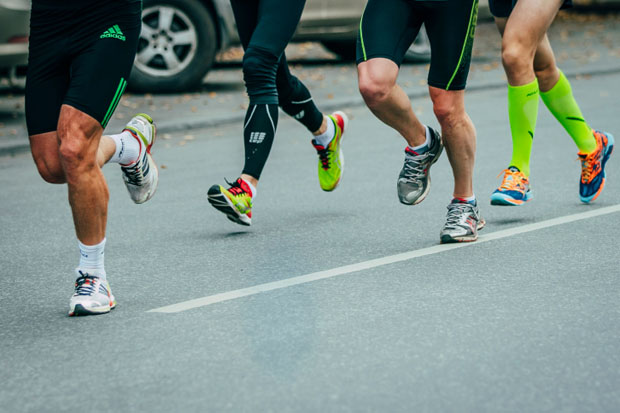How to increase your cadence without running faster
Using music or running with a faster friend are two ways to improve your running cadence

You’re on a run and you look down at your watch and it says your cadence is 165, and you’ve heard you should aim for a cadence of 170 or higher. So how do you increase your cadence?

Cadence refers to the number of steps or strides you take per minute. For many runners, cadence is tough to assess and understand, as many variables can account for a high or low cadence. For example, you may have a higher cadence in the winter than in the summer if you’re shortening your stride for more control on hard-packed snow or ice, but it will likely be lower in slushy conditions. The same thing applies to a flat vs. hilly route–your cadence is likely to fluctuate on hillier routes as your stride will shorten on uphills and lengthen on the way down.
A higher cadence will typically translate to a shorter stride and better form. A lower cadence (less than 160) can mean you are over-striding, which can slow you down. Improving your cadence not only will help you run faster with the same or less effort, but it can also lessen your chance of injury. Keeping cadence near the target rate will reduce stress on your feet, ankles and knees while improving your running economy.

If you are planning on working on your cadence, be sure to do so gradually. If your current average cadence is 160 spm (steps or strides per minute) for 5K, don’t start doing your long runs at 180 spm, or you’ll increase the of risk injury. Try to focus on taking more strides on each easy run, as you will naturally take quicker steps when doing speedwork or racing.

Here are four ways to increase cadence without trying to run faster:
Add drills to your pre-run routine: A-Skips, butt kicks and high knees. Here is a list of more drills you can do to activate.
Strides: Doing 30-40 metre accelerations at the end of recovery or easy runs is an easy way to measure your race-pace cadence.
Buddy system: Try running with a friend who is slightly faster than you and matching their stride. This strategy works best on easy runs.
Music: Some runners who listen to music while they run will curate a playlist with songs that share the same number of beats per minute as your target cadence. This technique can help you stay focused and motivated to continue the rhythm of your stride.


